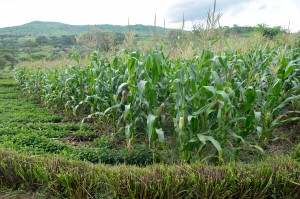
Models can help farmers decide how to adapt to climate change
Farmers in most of southern Africa can expect to see lower yet more erratic rainfall challenge their ability to grow crops, according to a majority of predictions on the effects of climate change. This could spell great hardship for populations already vulnerable to food security, whose demand for key crops such as maize will only increase in the future. New drought-resistant varieties can go some way to help them adapt, but only by combining them with new cropping systems will their challenges be overcome.
In a study published in the November 2014 issue of Soil and Tillage Research, a team of researchers set out to test whether crop simulation models can identify the best farming practices to counter the effects of climate change. Traditional experiments are expensive and time consuming; given the limited resources available to researchers, modeling is seen as a viable way of ensuring that farmers in differing agricultural conditions have access to technologies that they can use.

The Decision Support System for Agro-technology Transfer (DSSAT) model was calibrated with experimental data comparing conventional tillage, conservation agriculture and maize-cowpea rotation practices collected at Chitedze Research Station in Malawi. The model was then applied to seasonal weather predictions in a climate change scenario to determine which crop management options would be the least risk or most efficient for farmers to adapt.
In field experiments, CA maize-cowpea rotation brought 1335 kilograms per hectare more than conventional tillage over the six growing seasons and the DSSAT model predicted maize yields well, though it may tend to underestimate the cumulative benefits of crop rotation as soils recover from years of monocropping. When applied to the climate prediction until 2030 the model found that conservation agriculture, particularly with maize-cowpea rotation, brought significantly greater yields and were less affected by drier seasons than conventional tillage.
Though the DSSAT model was useful to predict the effects of zero till and crop residue retention, it fared poorly for crop rotation. The model also contains no algorithms for other CA treatments such as intercropping.
Identifying the most effective technologies is only the first step towards preparing farmers to face changing climates. The authors of the paper call for innovative ways to convince farmers concerned with their short-term food security to adopt conservation agriculture practices.
The study was realized with the support of the International Maize and Wheat Improvement Center (CIMMYT) under the CGIAR Research Program (CRP) on Climate Change, Agriculture and Food Security (CCAFS) and MAIZE CRP. Funding was also provided by Bundesministerium für wirtschaftliche Zusammenarbeit (BMZ), the German Technical Cooperation (GIZ) and the International Fund for Agriculture Development (IFAD).
Link to study: J.B. Aune, A.R. Ngwira and C. Thierfelder, DSSAT Modelling of Conservation Agriculture Maize Response to Climate Change in Malawi
Africa, climate change, conservation agriculture, Malawi, modeling
